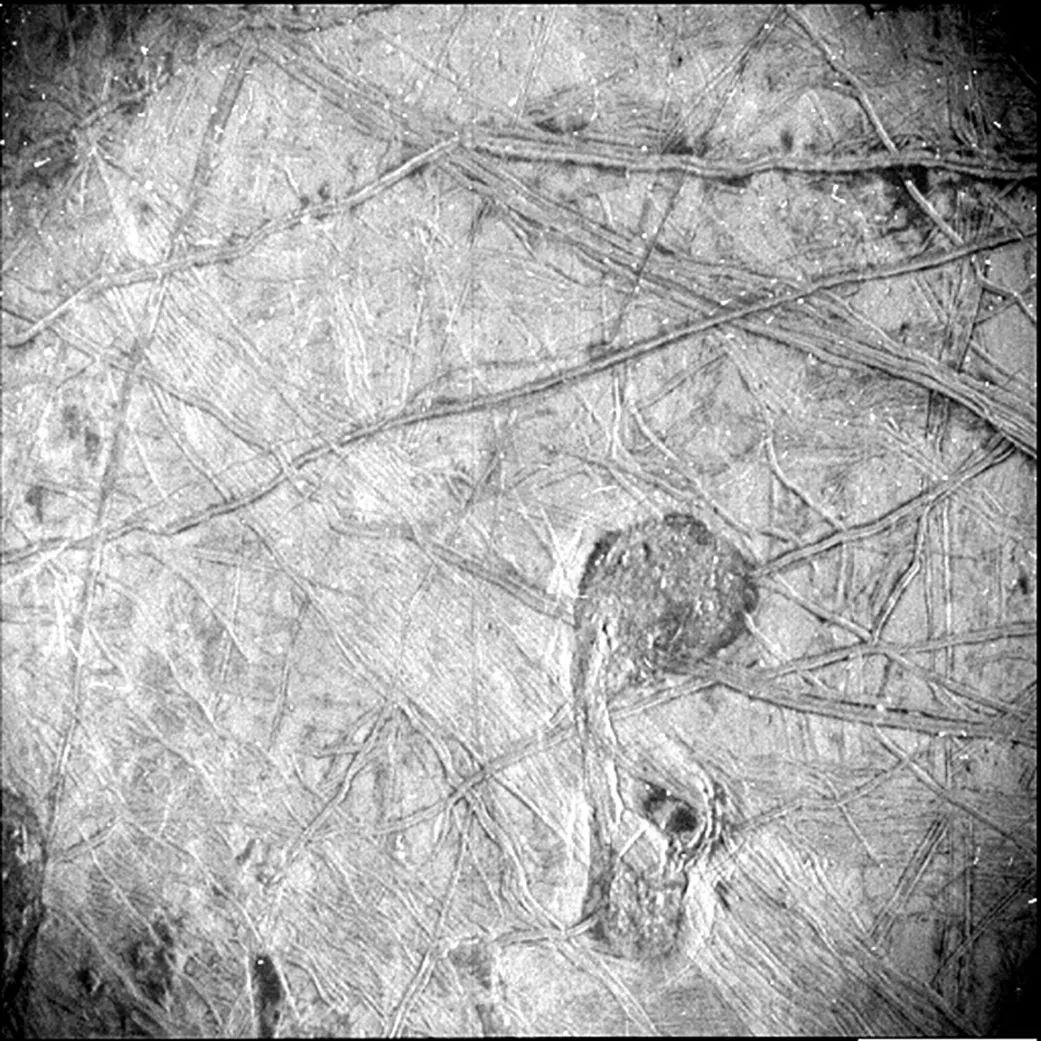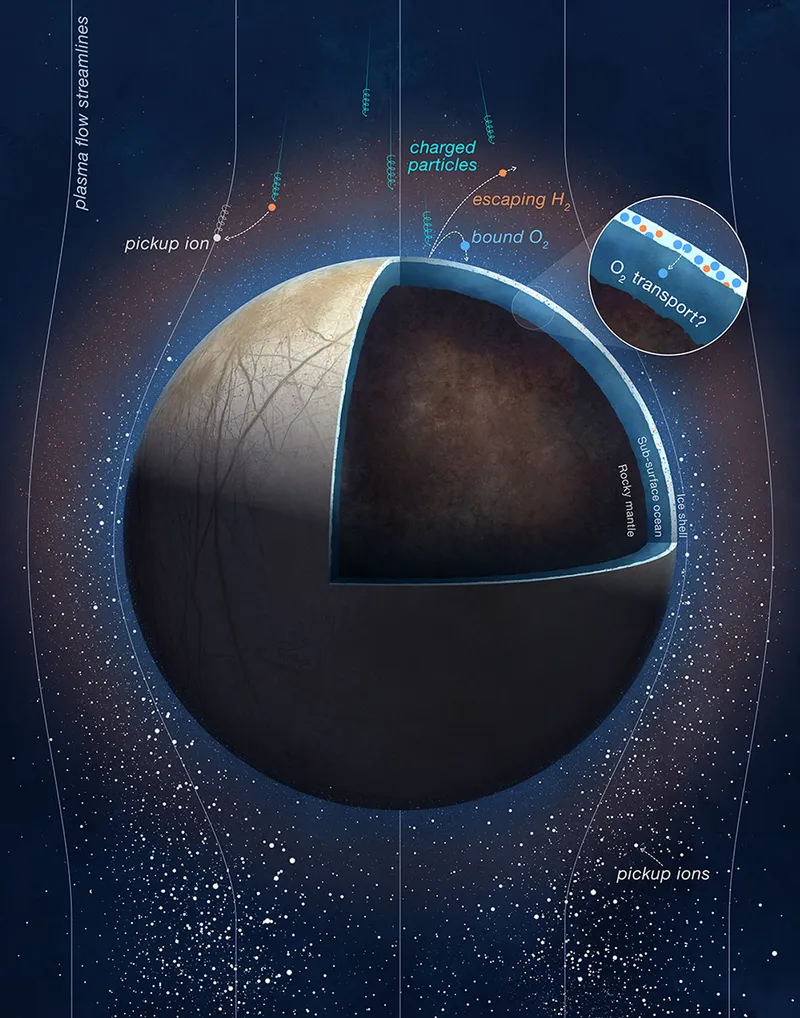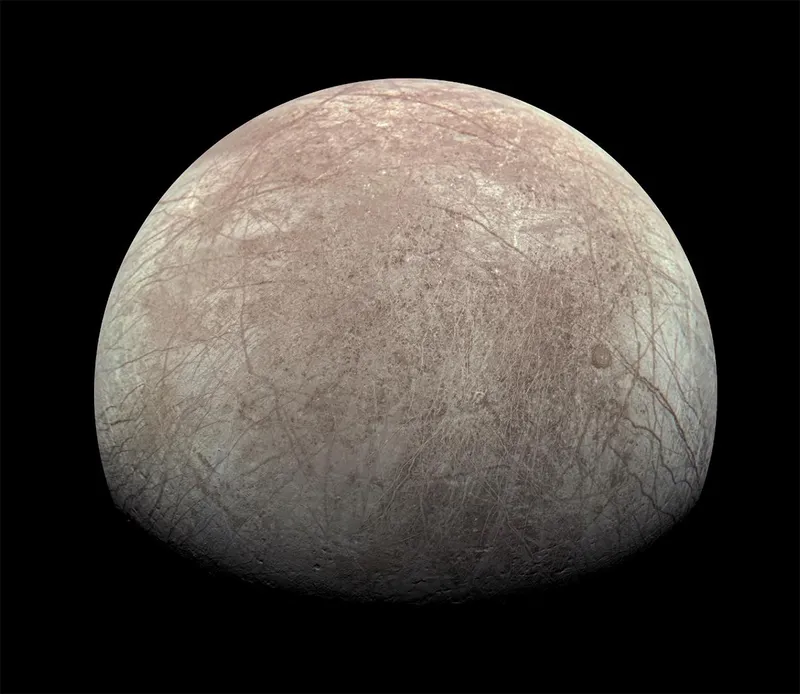Jupiter's icy Moon Europa produces a whopping 1,000 tons of oxygen every 24 hours, according to data collected by the Juno spacecraft orbiting the planet.
This, the scientists behind a new study calculate, would be enough to keep 1 million humans breathing for a day.
However, the findings show that Europa is actually producing a lot less oxygen than previously thought.

The study was published in Nature Astronomy using data collected by Juno's Jovian Auroral Distributions Experiment (JADE) instrument, measuring hydrogen outgassing from the icy moon’s surface.
Study authors calculate that Jupiter's moon Europa is producing about 12kg of oxygen every second, whereas previous estimates calculated the rate to be as much as 1,000kg per second.
But what's key is that planetary scientists believe some of the oxygen produced could work its way into Europa's subsurface ocean, and the icy moon is one of the best places in the Solar System to look for habitable conditions beyond Earth.
Europa, its ocean and the search for life

On Earth, we find life where we find water. Life as we know it is dependent on water.
So if we're interested in discovering places where life could exist beyond Earth, it makes sense to search those places in the Solar System where we find liquid water.
Europa is the 4th largest of Jupiter's moons, measuring 3,100km across, and is believed to have a large ocean of salty liquid water beneath its icy crust.
What's more, Europa orbits Jupiter in the middle of the planet's radiation belts, so charged particles rain down on the moon's icy surface.
This splits water molecules in two, generating oxygen that could find its way into the moon's ocean.
On 29 September 2022, the Juno probe flew within 220 miles (354 kilometers) of Europa, the JADE instrument identifying and measuring hydrogen and oxygen ions created by the bombarding charged particles and then picked up by Jupiter’s magnetic field as it swept past the moon.

"Europa is like an ice ball slowly losing its water in a flowing stream. Except, in this case, the stream is a fluid of ionised particles swept around Jupiter by its extraordinary magnetic field," says JADE scientist Jamey Szalay from Princeton University in New Jersey.
"When these ionized particles impact Europa, they break up the water-ice molecule by molecule on the surface to produce hydrogen and oxygen. In a way, the entire ice shell is being continuously eroded by waves of charged particles washing up upon it."
"Our ability to fly close to the Galilean satellites during our extended mission allowed us to start tackling a breadth of science, including some unique opportunities to contribute to the investigation of Europa’s habitability," says Scott Bolton, Juno’s principal investigator from the Southwest Research Institute in San Antonio.
"And we’re not done yet. More moon flybys and the first exploration of Jupiter’s close ring and polar atmosphere are yet to come."
Oxygen production is one aspect of Europa set to be studied by NASA’s Europa Clipper mission when it arrives at Jupiter in 2030.
Read the full paper in Nature Astronomy
